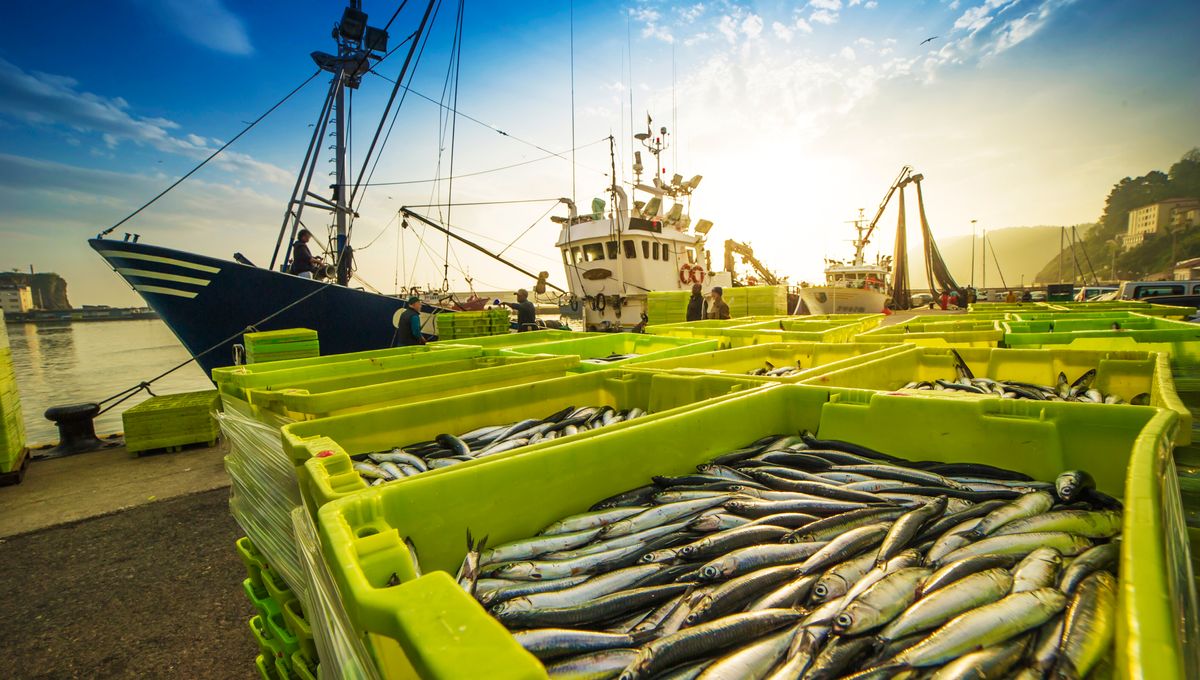
We’re sorry to say this is a sad and unpleasant one. A new study has shown the hidden world of pain fish endure before they die after being caught. In some instances, the animals can suffer high levels of pain for up to 10 minutes, a situation that experts say needs greater regulation to improve their overall welfare.
The study focused on the experience of rainbow trout and provides a quantified measurement of pain caused by air asphyxia, a common slaughter method used to kill trout and other fish. The team provided this pain index using the innovative Welfare Footprint Framework (WFF), developed by the Center for Welfare Metrics, to assess the total time animals spend suffering or in well-being.
Fish make up an important portion of many people’s diets. Across the world, 2.2 trillion wild and 171 billion farmed fish are killed each year for this purpose. That’s a lot of fish. To put it into perspective, 2.2 trillion fish per year is equivalent to nearly 70,000 fish killed per second – or if fish were football fans, it’s the equivalent of killing an entire stadium’s crowd every second. And that’s just the wild fish being slaughtered!
There is now growing societal concern about the impacts production practices have on animal welfare, especially within sustainability assessments. In short, environmental gains are deemed unjustifiable if they occur at the expense of animal welfare. However, for a long time we have lacked a way to quantify animal suffering or their well-being; and yet efforts to improve animal welfare depend on our ability to compare how different policies and practices will impact them by way of a common metric.
This is where the WFF comes in. It allows us to assign time-based values to subjective experiences, even those of animals that cannot express pain in a way we would understand it.
“Similar to life cycle analysis, the WFF begins by defining the scope of analysis, followed by an inventory of relevant circumstances (e.g., handling procedures, housing, density, air/water quality) and their biological outcomes (e.g., injuries, diseases, deprivations) over a timeframe of interest,” the authors write in their paper. “The impact of these biological outcomes on welfare is evaluated by estimating the intensity and duration of each resulting affective experience (e.g., physical pain, fear, or joy), using existing evidence from multiple research lines.”
So by quantifying the total time animals spend in either a negative or positive experiential state of differing intensities, the WFF can offer a comparable and relatable metric that can be used for different species and different scenarios.
“The [WFF] provides a rigorous and transparent evidence-based approach to measuring animal welfare, and enables informed decisions about where to allocate resources for the greatest impact,” Dr Wladimir Alonso, who came up with the method, explained in a statement.
How much do fish suffer?
In this context, the study found that rainbow trout endure an average of 10 minutes of intense pain during air asphyxia, with an estimated range of between two and 22 minutes of pain depending on factors like fish size or water temperature. This is effectively 24 minutes of pain per kilogram of fish.
The study also assessed the cost-effectiveness of interventions such as electrical stunning. If implemented properly, this alternative way to kill fish could avert 60 to 1,200 minutes of moderate to extreme pain for every US dollar of capital costs. Alternatively, percussive stunning offers high welfare potential, but is still challenging to implement consistently in commercial settings. Worryingly, the assessment also shows that pre-slaughter activities like crowding and transporting fish, which are often overlooked, likely cause greater cumulative suffering than the slaughter itself.
These results could help inform and shape new regulatory discussions as well as improving certification standards across the world. They could also guide welfare investments that deliver the greatest benefits for the cost.
The study is published in Scientific Reports.
Source Link: Fish Suffer "10 Minutes Of Intense Pain" Before Dying In Commercial Fishing Operations